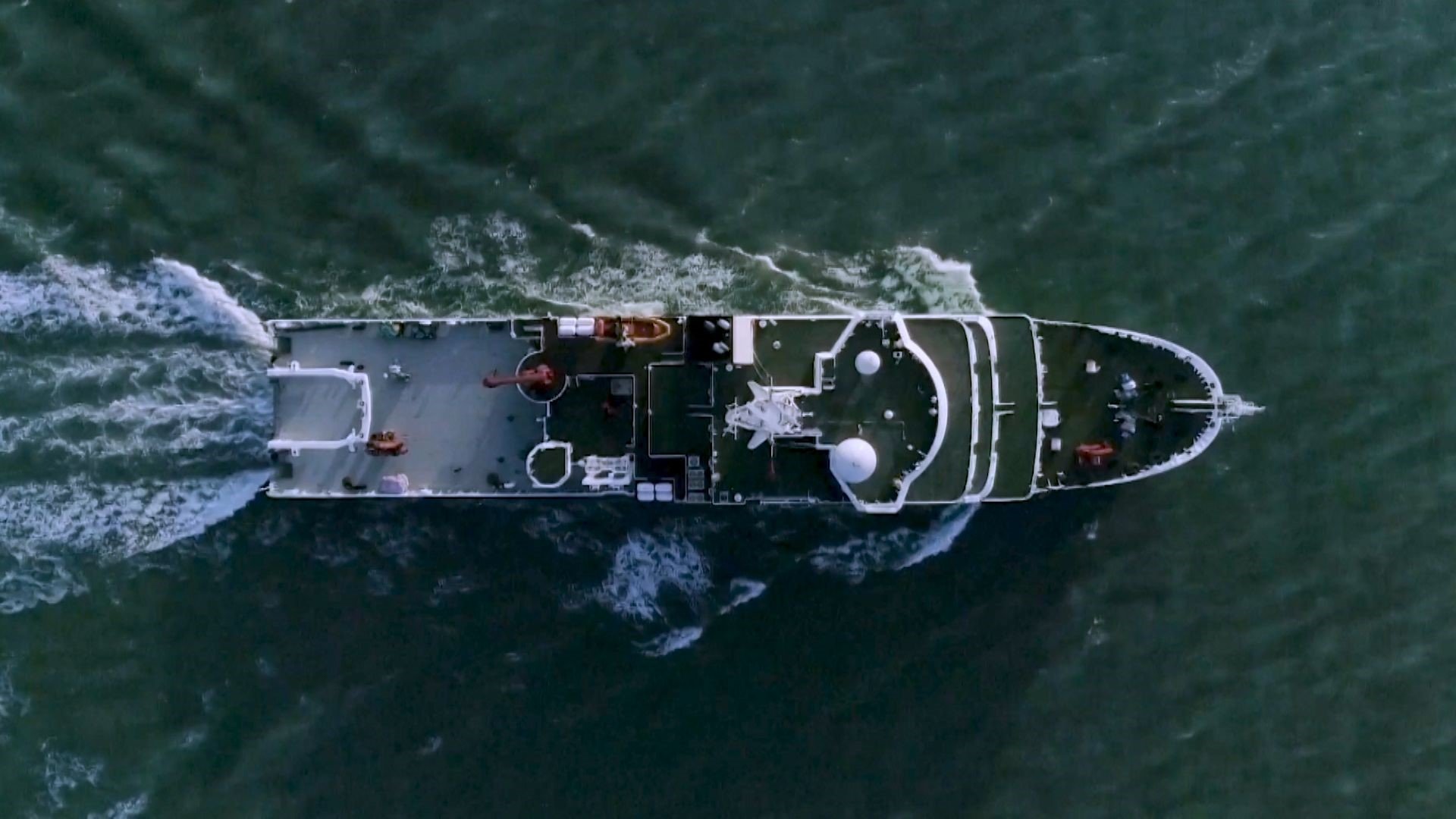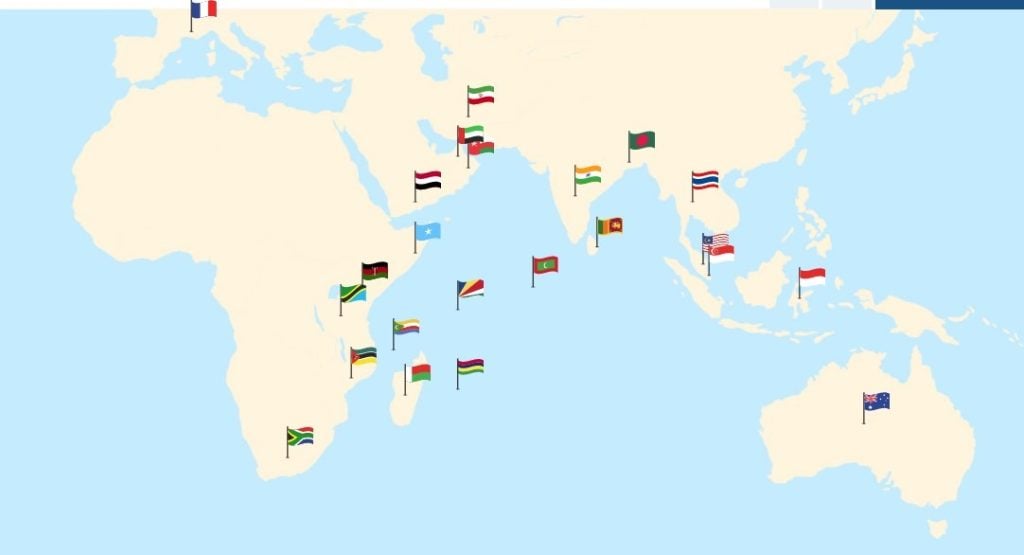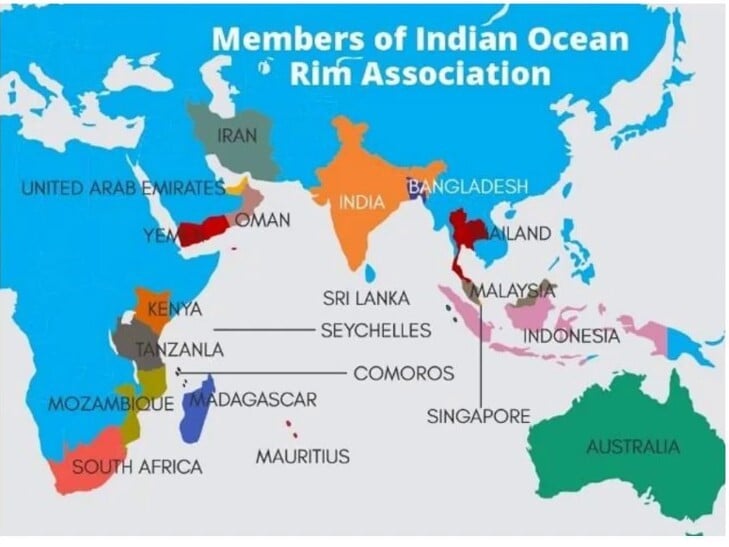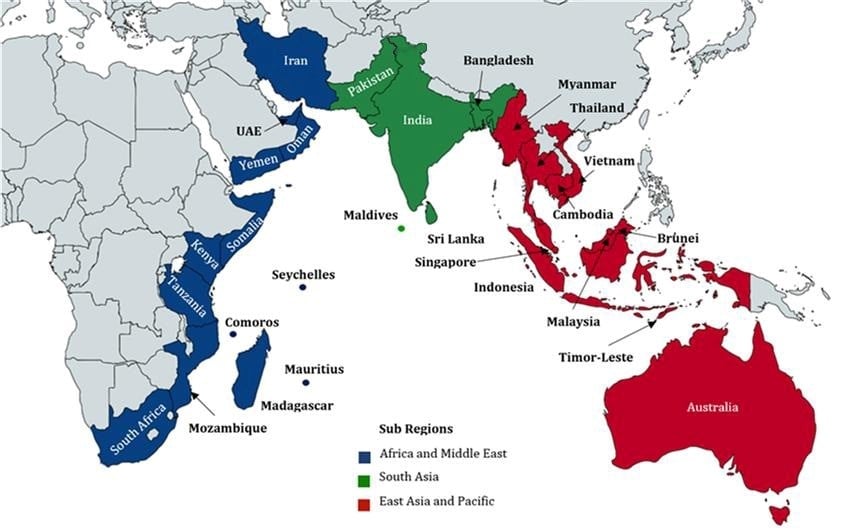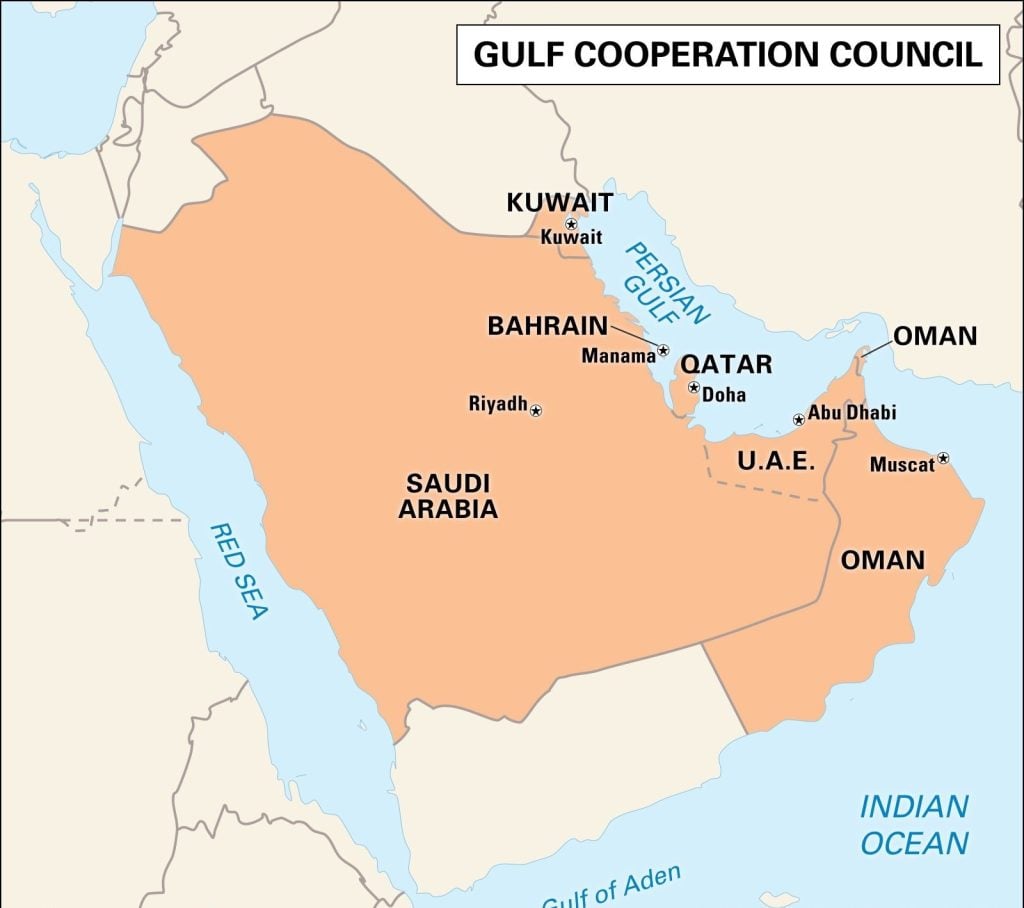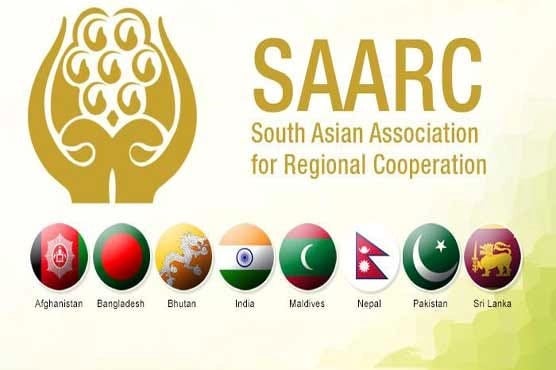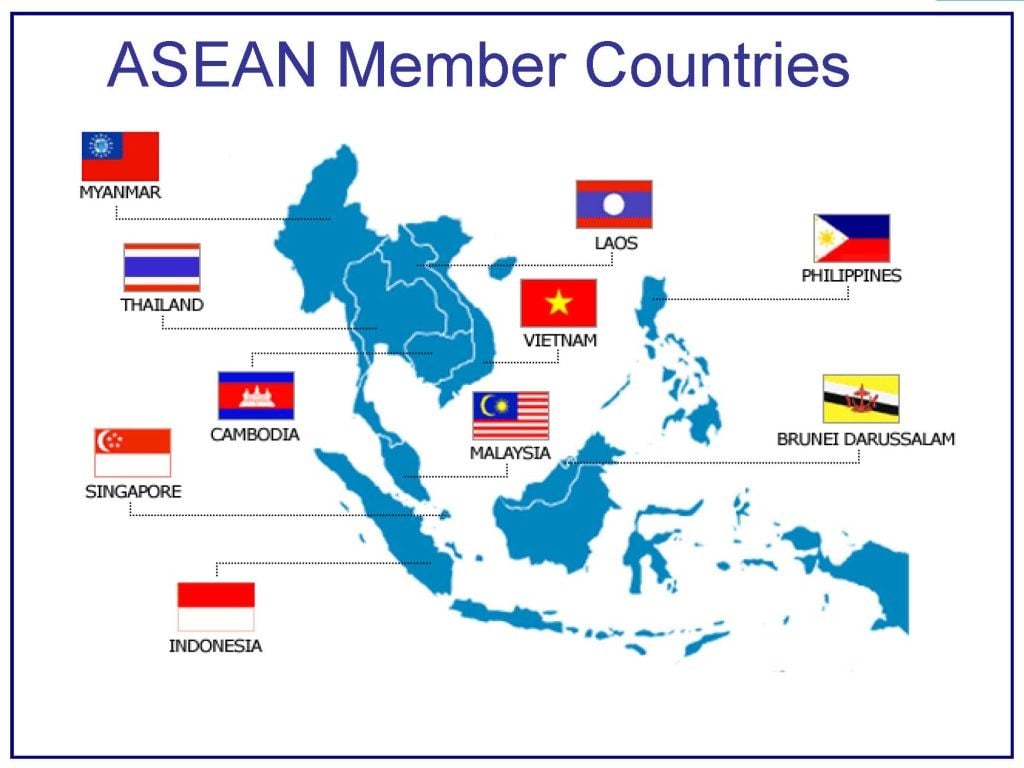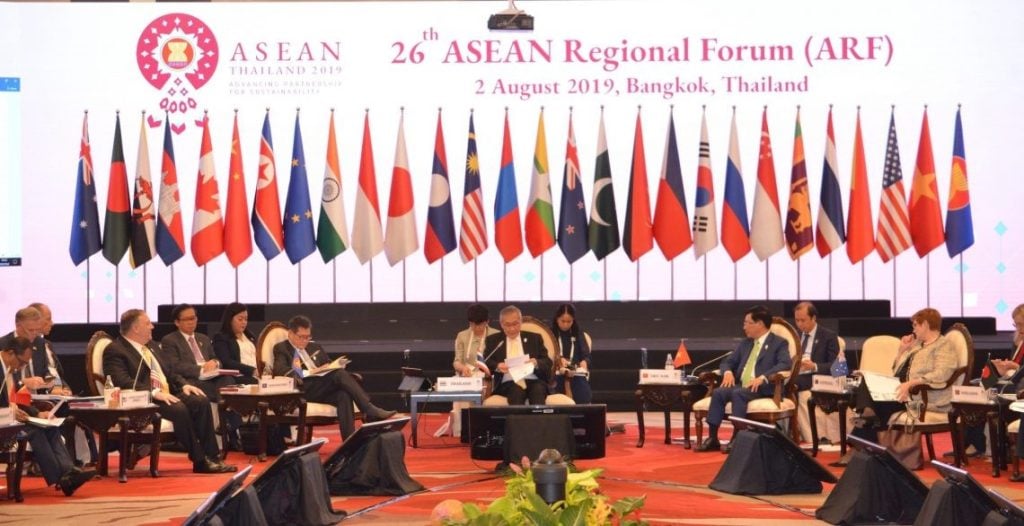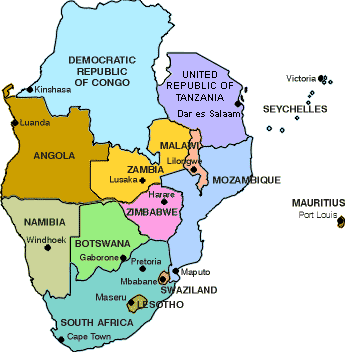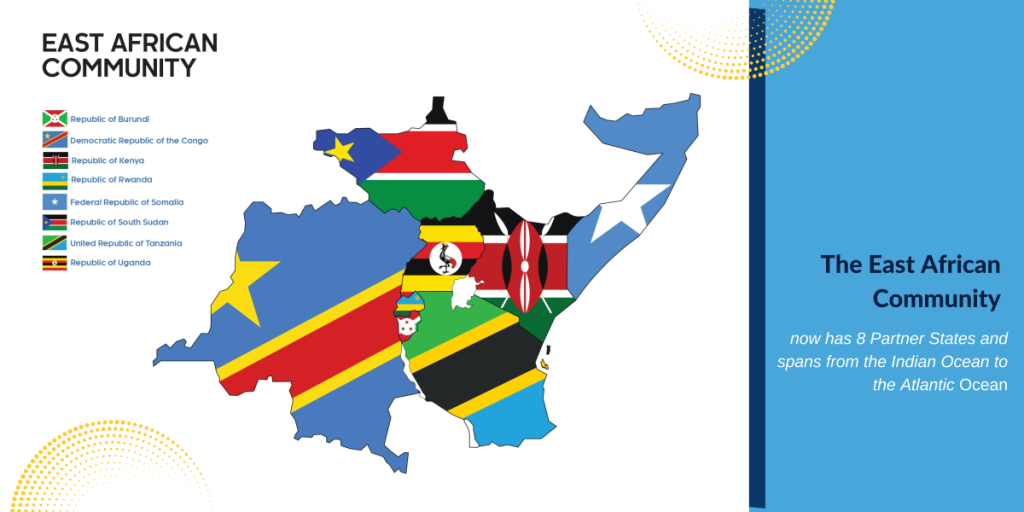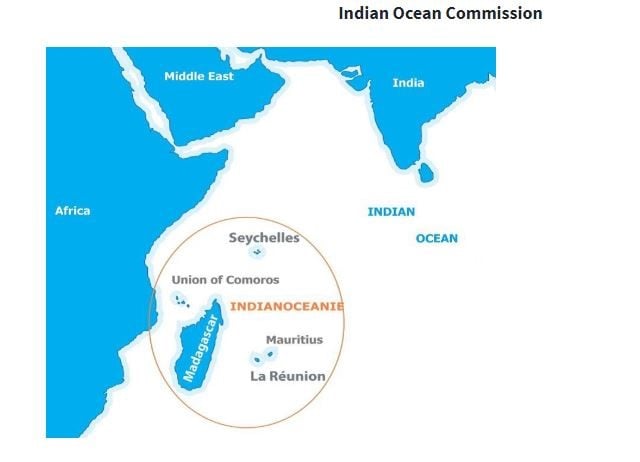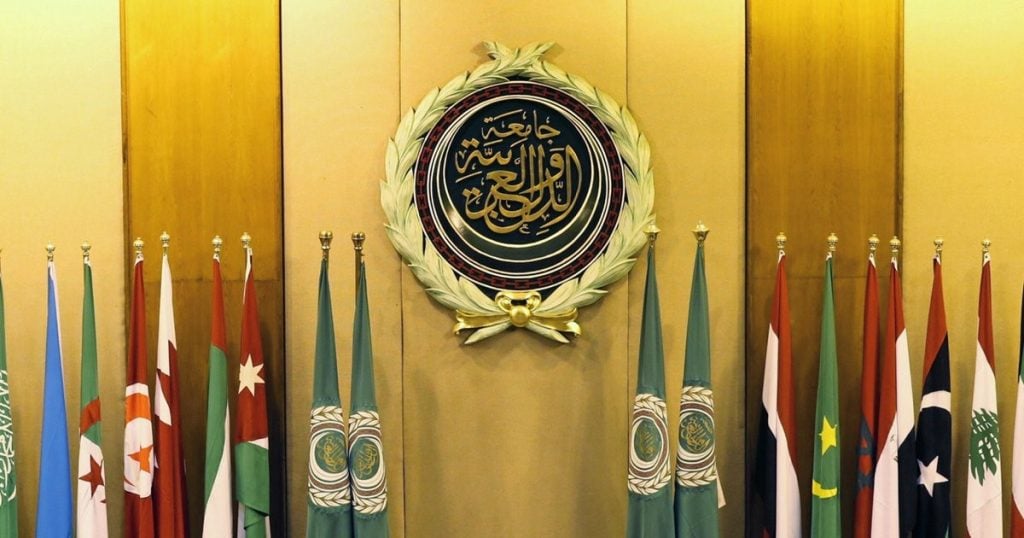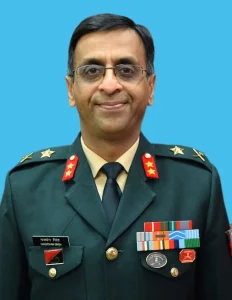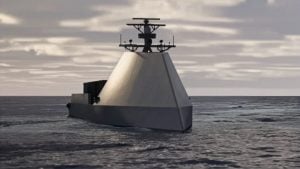The Indian Ocean Region (IOR) is a vast and diverse geopolitical landscape, encompassing a myriad of countries, cultures, and strategic interests. At the heart of this dynamic region lie a tapestry of multilateral organizations and cooperative frameworks, each playing a crucial role in shaping the economic, security, and diplomatic landscape. From the Indian Ocean Rim Association for Regional Cooperation (IOR-ARC) to the Gulf Cooperation Council (GCC), these groups have become integral to understanding the complex interplay of forces that define the IOR. In this comprehensive article, we will delve into the12 Key Organizations in the Indian Ocean Region, exploring their objectives, memberships, and the pivotal influence they wield.
5 Powerful Weapons Used by the Garud Commandos
1. The Indian Ocean Rim Association for Regional Cooperation (IOR-ARC)
Established in 1997, the Indian Ocean Rim Association for Regional Cooperation (IOR-ARC) stands as the only pan-Indian Ocean grouping, encompassing 22 member nations and 6 dialogue partners. Headquartered in Ebene, Mauritius, this regional cooperation platform aims to foster economic, social, and cultural ties among its diverse membership, which includes countries as far-reaching as Australia, Indonesia, and South Africa.
The association’s overarching goal is to create a vibrant network for trade, investment, and technological exchange, leveraging the collective resources and expertise of its members to drive sustainable development across the Indian Ocean basin.
2. The Indian Ocean Naval Symposium (IONS)
Launched in 2008 by India, the Indian Ocean Naval Symposium (IONS) is a forum dedicated to enhancing maritime security cooperation among the navies of the IOR’s littoral states. With 24 member nations and 8 observer states, IONS serves as a platform for the exchange of information, the promotion of friendly relationships, and the coordination of responses to natural disasters and other maritime challenges.
By fostering a spirit of camaraderie and shared purpose among the region’s naval forces, IONS plays a crucial role in strengthening the collective security and resilience of the IOR.
3. The Gulf Cooperation Council (GCC)
Established in 1981 and headquartered in Riyadh, Saudi Arabia, the Gulf Cooperation Council (GCC) is a regional intergovernmental organization comprising six Gulf Arab states: Bahrain, Kuwait, Oman, Qatar, Saudi Arabia, and the United Arab Emirates. Formed in the wake of the Iran-Iraq war, the GCC’s primary objectives include strengthening cooperation in the areas of agriculture, trade, industry, investment, and security among its member nations.
As a cohesive political and economic bloc, the GCC wields significant influence in the Middle Eastern and global arenas.
4. The South Asian Association for Regional Cooperation (SAARC)
The South Asian Association for Regional Cooperation (SAARC) was established in 1985 and is headquartered in Kathmandu, Nepal. As a regional intergovernmental organization, SAARC brings together eight South Asian nations – Afghanistan, Bangladesh, Bhutan, India, the Maldives, Nepal, Pakistan, and Sri Lanka – with the aim of promoting economic development and regional integration.
In addition to its member states, SAARC also boasts ten observer states, including Australia, China, and the United States, reflecting the organization’s growing international relevance.
5. The Association of Southeast Asian Nations (ASEAN)
Established in 1967 and headquartered in Jakarta, Indonesia, the Association of Southeast Asian Nations (ASEAN) is a regional intergovernmental organization that fosters cooperation and integration among its ten member states: Brunei, Cambodia, Indonesia, Laos, Malaysia, Myanmar, the Philippines, Singapore, Thailand, and Vietnam.
ASEAN’s wide-ranging agenda encompasses economic, political, security, military, educational, and socio-cultural spheres, making it a pivotal player in the Asia-Pacific region.
6. The ASEAN Regional Forum (ARF)
Launched in 1994, the ASEAN Regional Forum (ARF) is a platform for dialogue and consultation on political and security issues in the Asia-Pacific region. Comprising the ten ASEAN member states and 17 partner states, including Australia, China, India, Japan, and the United States, the ARF aims to build confidence, promote preventive diplomacy, and contribute to efforts towards a peaceful and prosperous Asia-Pacific.
7. Southern African Development Community (SADC)
Originally established in 1980 as the Southern African Development Coordination Conference (SADCC), the Southern African Development Community (SADC) was formally constituted in 1992 with its headquarters in Gaborone, Botswana. This inter-governmental organization, with 16 member states, focuses on enhancing socio-economic cooperation and integration, as well as political and security cooperation, among the countries of southern Africa.
The SADC Standing Maritime Committee plays a crucial role in promoting regional peace and prosperity through maritime military cooperation.
Indian Military Bases Around the World
8. East African Community (EAC)
The East African Community (EAC) has a rich history, having been founded in 1967, dissolved in 1977, and then revived in 2000. Headquartered in Arusha, Tanzania, the EAC is an intergovernmental organization that aims to improve political, economic, and social development among its six partner states: Burundi, Kenya, Rwanda, South Sudan, Tanzania, and Uganda.
The ultimate objective of the EAC is to establish a political federation of the East African states.
9. Indian Ocean Commission (COI)
Established in 1982 and institutionalized in 1984, the Indian Ocean Commission (COI) is an intergovernmental organization headquartered in Port Louis, Mauritius. The COI’s primary focus is on enhancing political, diplomatic, economic, and commercial cooperation among its five member nations: Comoros, Madagascar, Mauritius, Réunion (France), and Seychelles. Additionally, the organization works to strengthen regional cultural identity, cooperation in cultural, scientific, technical, educational, and judicial fields, and the preservation of natural resources.
10. The Arab League, or League of Arab States
The Arab League, or League of Arab States, was established in 1945 and is headquartered in Cairo, Egypt. This loose confederation of 22 Arab nations aims to improve coordination among its members on matters of common interest. The organization’s member states include Algeria, Bahrain, Comoros, Djibouti, Egypt, Iraq, Jordan, Kuwait, Lebanon, Libya, Mauritania, Morocco, Oman, Palestine, Qatar, Saudi Arabia, Somalia, Sudan, Syria (suspended), Tunisia, the United Arab Emirates, and Yemen.
11. The Organisation of the Islamic Conference (OIC)
Established in 1969 and headquartered in Jeddah, Saudi Arabia, the Organisation of the Islamic Conference (OIC) is a multilateral organization with 57 member nations. Its primary objective is to safeguard the interests and ensure the progress and well-being of Muslims worldwide. The OIC’s official languages are Arabic, English, and French, reflecting its global reach and diverse membership, which includes countries from Africa, Asia, and the Middle East.
12. The Five Power Defence Arrangements (FPDA)
The Five Power Defence Arrangements (FPDA) is a military alliance founded in 1971, with its member states being Australia, Malaysia, New Zealand, Singapore, and the United Kingdom. The FPDA’s primary purpose is to consult each other “immediately” in the event or threat of an armed attack on any of the member nations, with the aim of jointly or separately deciding on the appropriate response measures.
Significance of the Indian Ocean for India
As a nation strategically positioned at the heart of the Indian Ocean, India has a vested interest in the stability and prosperity of the region. With a coastline stretching over 7,500 kilometers, India’s economic and security interests are deeply intertwined with the dynamics of the Indian Ocean. The region accounts for 95% of India’s trade by volume and 68% by value, underscoring its crucial role in the country’s economic development. Additionally, approximately 80% of India’s crude oil imports are transported via the Indian Ocean, further highlighting its energy and resource significance. India has also been granted exclusive rights to explore and extract mineral resources from the Central Indian Ocean, reinforcing its strategic foothold in the region. However, the Indian Ocean also poses significant challenges, including concerns over terrorism, smuggling, illegal fishing, and human trafficking, which India is actively working to address through enhanced maritime security and diplomatic initiatives.
Decoding the Hand Signals of Aircraft Carrier Operations
Conclusion
The Indian Ocean Region is a vast and multifaceted geopolitical landscape, where a tapestry of multilateral organizations and cooperative frameworks play a pivotal role in shaping the economic, security, and diplomatic landscape. From the pan-Indian Ocean IOR-ARC to the security-focused IONS and the Gulf-centric GCC, these groups have become integral to understanding the complex interplay of forces that define the IOR. As India continues to assert its influence as a dominant Indian Ocean power, the role of these organizations will only become more crucial in navigating the region’s evolving challenges and opportunities. By fostering cooperation, promoting economic integration, and enhancing maritime security, these key organizations are poised to play a vital part in the future of the Indian Ocean Region.
FAQs
Q1. What is the primary objective of the Indian Ocean Rim Association for Regional Cooperation (IOR-ARC)?
The primary objective of the IOR-ARC is to create a platform for trade, socio-economic, and cultural cooperation among its member nations in the Indian Ocean Rim area.
Q2. How many member nations does the Indian Ocean Naval Symposium (IONS) have?
The IONS has 24 member nations and 8 observer states.
Q3. What are the main areas of focus for the Gulf Cooperation Council (GCC)?
The GCC aims to strengthen cooperation among its member nations in the areas of agriculture, trade, industry, investment, and security.
Q4. Which organization is responsible for promoting regional peace and prosperity through maritime military cooperation in Southern Africa?
The SADC Standing Maritime Committee, under the Southern African Development Community (SADC), is responsible for promoting regional peace and prosperity through maritime military cooperation.
Q5. What is the ultimate objective of the East African Community (EAC)?
The ultimate objective of the East African Community (EAC) is to establish a political federation of the East African states.
